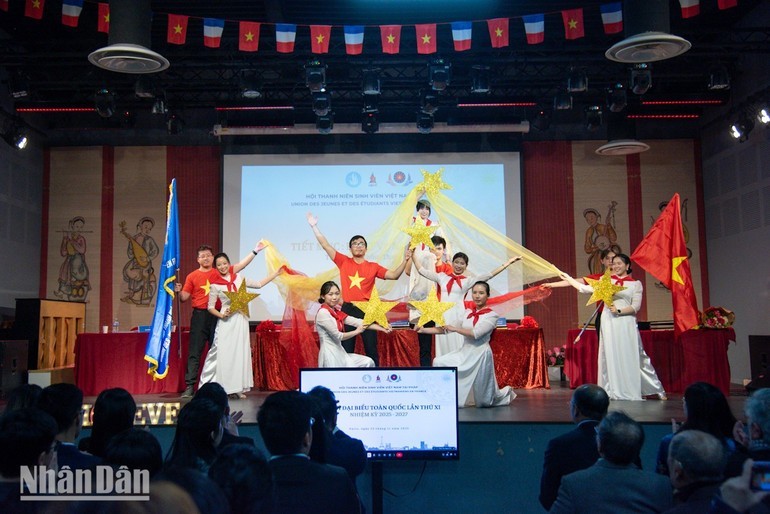| Vietnam - EU Free Trade Agreement: Challenges and the Way Forward | |
| Vietnam Lures over US$20 Billion in FDI in Nine Months |
On the occasion of the 5th anniversary of the EU-Vietnam Free Trade Agreement (EVFTA), Head of the Vietnam Trade Office in France Vu Anh Son shared with the Vietnam News Agency (VNA) in Paris a comprehensive assessment of the agreement’s impact on bilateral trade, as well as strategic directions for the future.
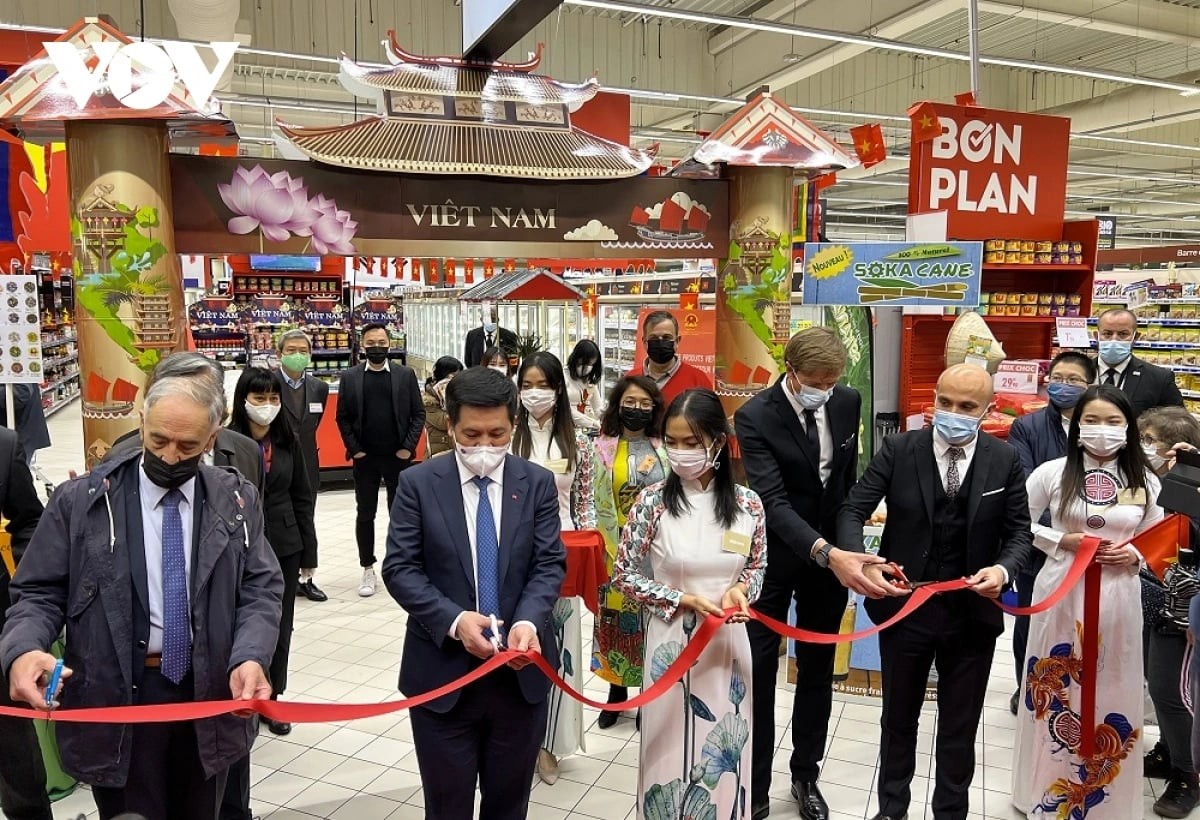 |
| Vietnamese Goods Week at France’s Largest Retail Chain, Carrefour (Photo: VOV) |
Since coming into effect in August 2020, EVFTA has marked one of the most important milestones in the history of Vietnam-EU economic relations, particularly between Vietnam and France.
Amid unprecedented global upheavals caused by the COVID-19 pandemic, geopolitical conflicts, and disruptions to global supply chains, the EVFTA has served as a crucial "anchor" of stability for bilateral trade relations.
Vu Anh Son emphasized that one of the most notable aspects over the past five years is the exceptional resilience of Vietnam-France trade relations. He stated, “Five years after the EVFTA officially took effect, trade between Vietnam and France has not only grown impressively in scale but has also shown strong resistance and adaptability to unprecedented global supply chain disruptions.”
From 2021 to 2024, bilateral trade witnessed a robust recovery, with Vietnam’s exports to France increasing from USD 6.1 billion to USD 7.5 billion - a 23% rise compared to the beginning of the period and well beyond the pre-COVID peak of USD 6.5 billion in 2019.
“EVFTA has not only brought tariff benefits but also spurred reforms in rules of origin, improved goods management, and expanded access to logistics, finance, and insurance services,” he explained.
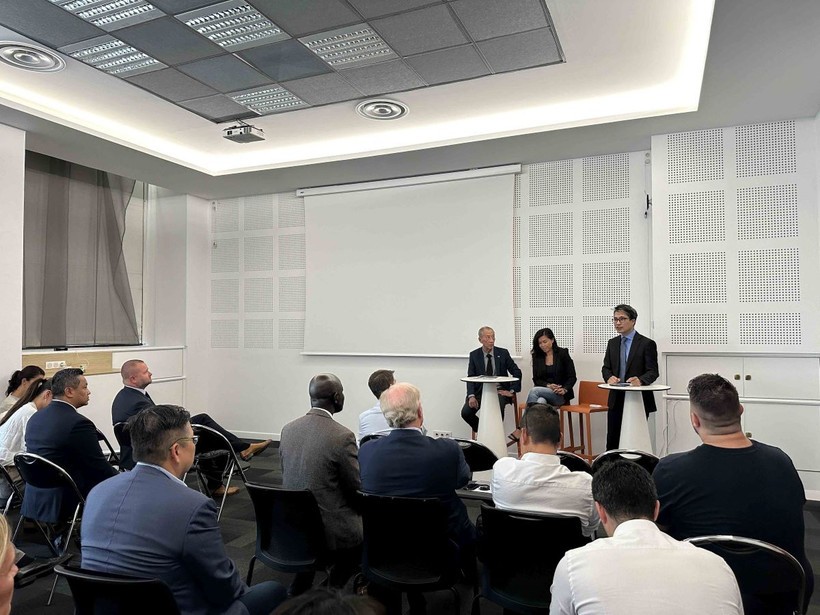 |
| Vietnam-France Business Forum Held in Marseille to Boost Trade Ties (Photo: VNA) |
A particularly significant milestone was the official upgrade of bilateral relations to a “Comprehensive Strategic Partnership” during the visit of General Secretary To Lam to France in October 2024.
This event not only strengthened political and diplomatic ties but also opened a new phase of deeper economic and trade cooperation, with the expectation of sustaining an annual bilateral trade growth rate of 6-7%, targeting a two-way trade turnover of USD 12-15 billion.
In terms of investment attraction, the EVFTA has played a vital role with its commitments to investment protection, national treatment, and most-favored-nation status. French capital has focused on high value-added sectors such as precision engineering, renewable energy, environmental technologies, pharmaceuticals, and high-tech agriculture.
He highlighted: “The presence of major groups such as Schneider Electric, Pernod Ricard, and Boehringer Ingelheim has elevated Vietnam’s management capacity and product quality, enabling domestic firms to access the highly demanding European market.”
He also noted that the success of various sectors did not happen by chance, but was “the result of three synergistic factors: direct competitive advantages from tariff preferences, timing aligned with Europe’s growing demand for supply chain diversification, and the intrinsic capabilities and proactive efforts of Vietnamese enterprises.”
Textiles and footwear have been identified as the most direct and obvious beneficiaries of EVFTA. Before the agreement took effect, these sectors faced high import tariffs when entering the EU.
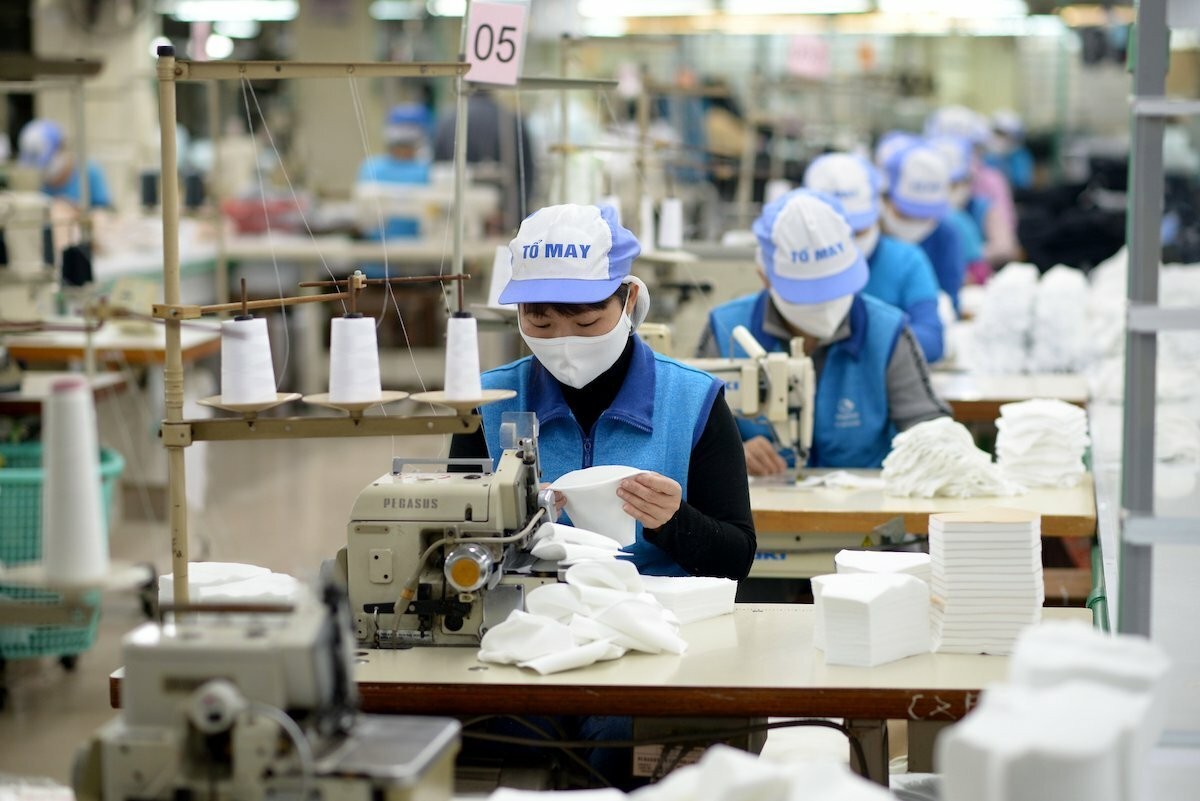 |
| Footwear remains a major export category in Vietnam-EU trade |
Gradual tariff elimination under EVFTA has provided Vietnamese products with a price competitiveness advantage. Major French retail brands like Decathlon have significantly increased their orders from Vietnam.
Agricultural and seafood products have seen remarkable growth, serving as a clear example of Vietnam’s ability to penetrate demanding market segments.
Vu Anh Son shared: “The success story of Vietnamese rice is a typical example. Thanks to trade promotion efforts and utilization of duty-free quotas, Vietnamese rice has successfully entered major French supermarket chains such as Carrefour and Leclerc.”
This achievement was driven by pioneering enterprises investing in production, processing, and traceability systems that meet GlobalG.A.P. and ASC standards, overcoming the EU’s strict technical barriers.
Though not as prominently mentioned as textiles or agriculture, electronics, machinery, and components form the largest export group, playing a vital role in global supply chains.
Vietnam has become an important hub for electronics manufacturing and assembly, with products such as phones, computers, and electronic components accounting for a major share of exports to France and the EU.
However, he also pointed out a concerning paradox: “The growth in absolute export value has not corresponded to deeper market penetration.”
A report from France’s Ministry of Finance indicated that since 2019, Vietnam’s market share in France has not increased significantly, suggesting that tariff removal is only the starting point.
In the textile sector, the EU is tightening regulations related to circular economy and sustainable fashion, requiring products to have longer lifespans, be more recyclable, and contain a certain amount of recycled fibers - a major technological and investment challenge.
Agriculture, forestry, and fisheries are also facing increasingly stringent barriers from the EU, often referred to as the “Green Wall,” including sanitary and phytosanitary (SPS) measures with some of the world’s strictest pesticide residue and antibiotic standards.
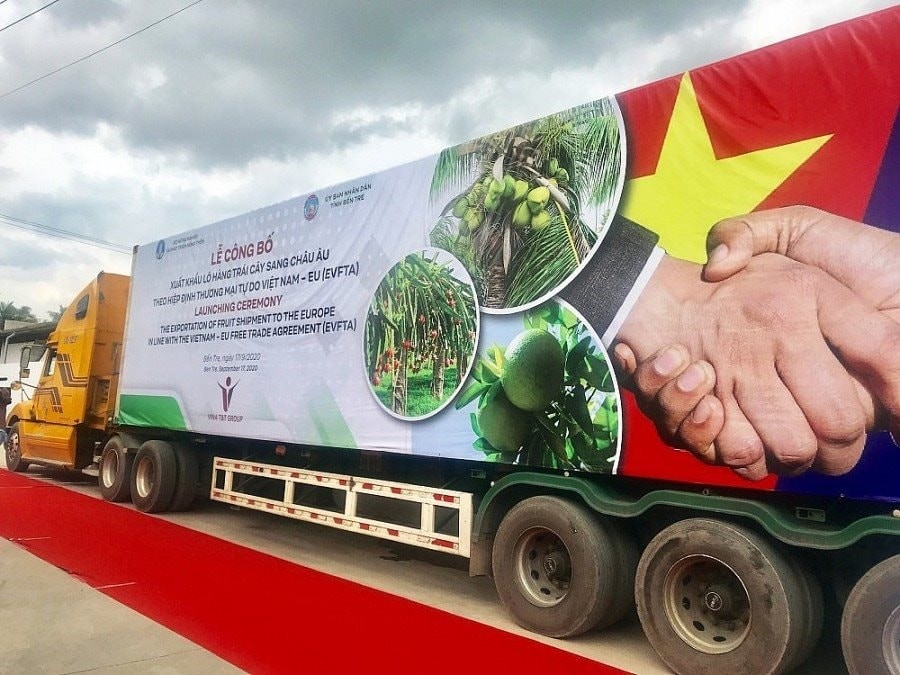 |
| Vietnamese Agricultural Products Benefit from the EVFTA |
The biggest current challenges stem from new EU sustainability regulations. The EU’s Corporate Sustainability Due Diligence Directive (CSDDD), effective from July 2024, requires large EU companies to be legally accountable for human rights and environmental impacts across their entire supply chains.
Additionally, the Carbon Border Adjustment Mechanism (CBAM) imposes a “carbon tax” on energy-intensive imports, reducing the competitiveness of Vietnamese products unless they are produced via “green” processes.
In response to these barriers, Vu Anh Son believes they should be transformed into drivers of development. He considers the EU Green Deal both a major challenge and a unique opportunity for Vietnam to innovate and rise.
“Vietnam can turn this challenge into a leading advantage by integrating the implementation of the Just Energy Transition Partnership (JETP) with meeting CBAM and CSDDD standards.”
To overcome challenges and move up the value chain, Vu Anh Son proposed that Vietnam should focus on three strategic pillars:
First, build a strong domestic industrial capacity. Vietnam must shift from a passive FDI attraction model to an active industrial policy, offering targeted incentives for supporting industries, especially upstream sectors like textile-dyeing, specialty chemicals, and high-tech components.
Second, modernize logistics and digital infrastructure to reduce costs and enhance competitiveness.
Third, develop a high-quality workforce that meets the needs of emerging industries and international standards.
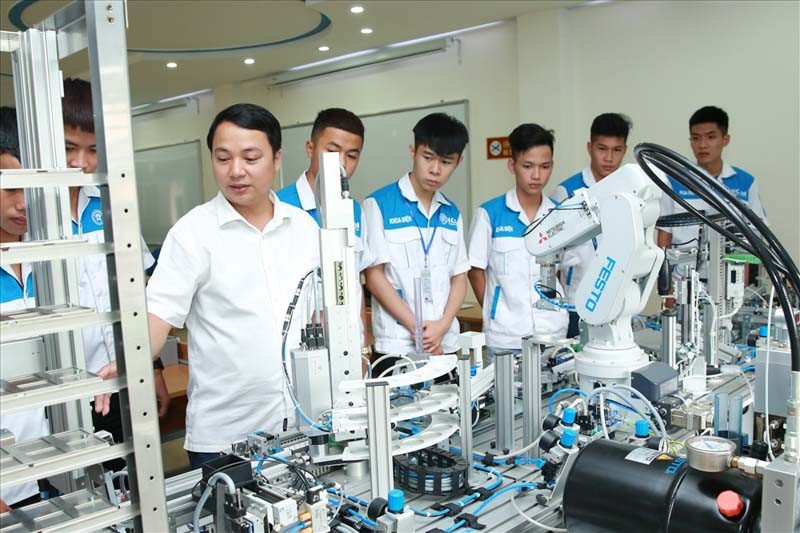 |
| Training High-Quality Human Resources (Photo: IRDM) |
He also emphasized the importance of proactive economic diplomacy. Vietnam should actively negotiate Mutual Recognition Agreements (MRAs) with the EU on conformity assessment and technical standards to reduce inspection and certification burdens on exports.
At the same time, Vietnam needs to work with the European Commission to establish carbon pricing and greenhouse gas reporting standards that are recognized as equivalent to those of the EU, thereby minimizing the impact of CBAM.
The biggest internal challenge, according to Vu Anh Son, is policy coordination. He noted: “Issues such as trade, industry, infrastructure, education, and environment are deeply interconnected, yet they are often managed separately by different ministries in isolated ‘silos’.”
Therefore, he recommended the establishment of a national steering committee for FTA implementation and value chain upgrading. “This is not just about adding another layer of bureaucracy. It is a structural solution to a structural problem,” he stressed.
Looking ahead, he expressed optimism about the prospects for Vietnam-France cooperation under the EVFTA framework. He believes that after five years of implementation, the agreement has significantly advanced bilateral trade relations.
According to him, EVFTA not only delivers economic benefits but also serves as a stabilizing factor in the strategic relationship between the two countries.
With the upgrade to a Comprehensive Strategic Partnership, he expects breakthrough developments in Vietnam-France economic and trade cooperation. Vietnam is gradually asserting its role not merely as a processing hub but as an essential, irreplaceable link in the global value chain.
Vu Anh Son concluded: “In an uncertain world, the EVFTA has helped build a flexible and highly resilient Vietnam-France supply chain, reinforcing Vietnam’s position as a reliable trading partner in the Indo-Pacific region.”
With the solid foundation built over the past five years and a clear strategic direction, Vietnam-France trade relations under the EVFTA framework are poised for strong continued growth, making a significant contribution to future bilateral trade goals.
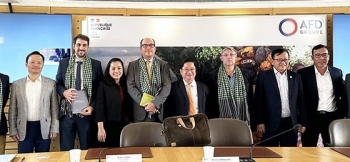 | Vietnam, France Boast Huge Cooperation Opportunities The Can Tho city delegation led by Tran Viet Truong, chairman of the People's Committee, visited and worked with a number of localities, agencies and ... |
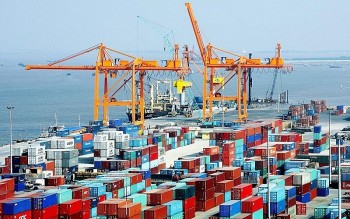 | EVFTA Brings Significant Opportunities for Vietnamese Businesses The EU-Vietnam Free Trade Agreement (EVFTA) took effect on August 1, 2020. Despite being affected by the Covid-19 pandemic, the annual export turnover of goods ... |

